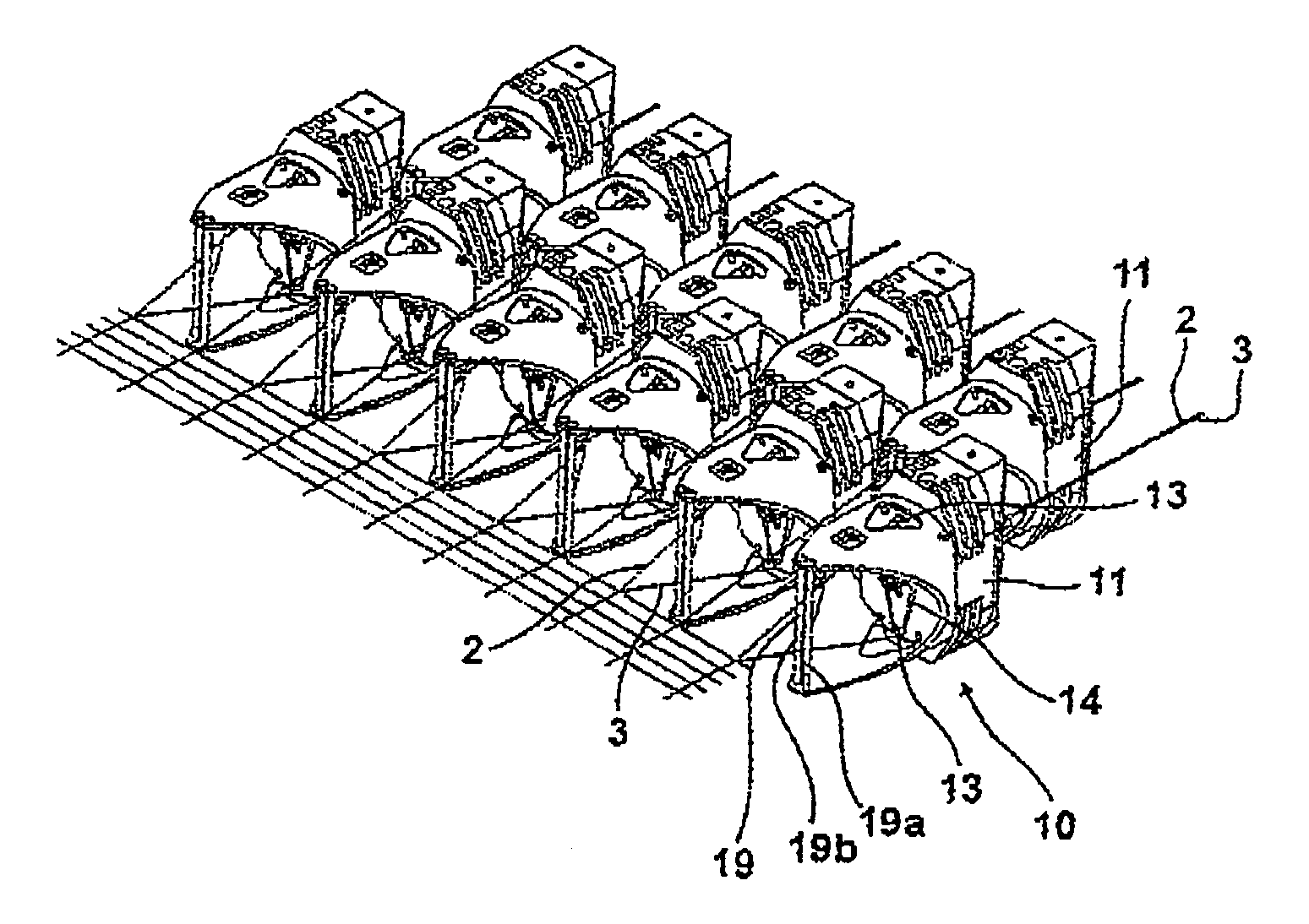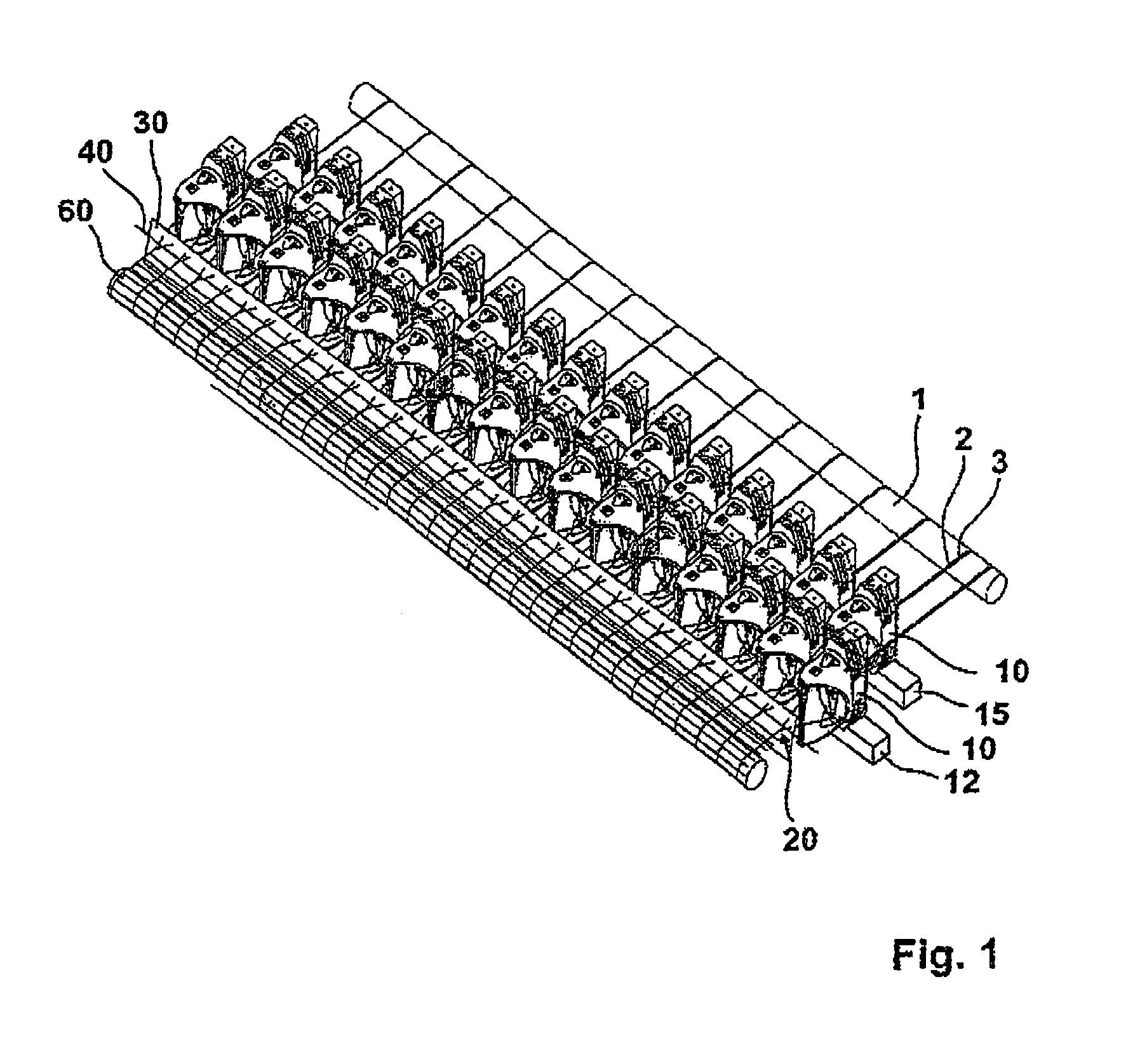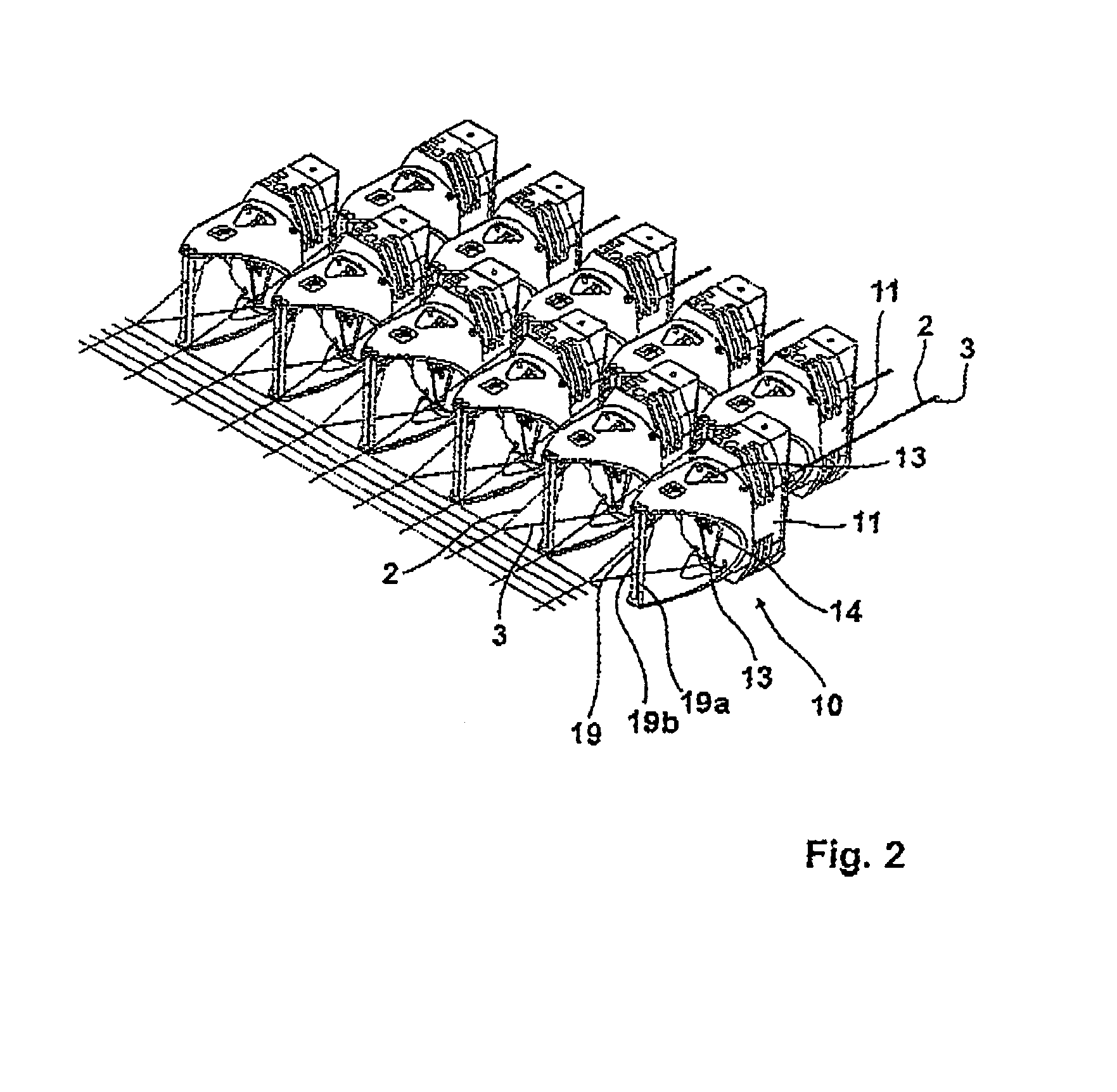Device for manufacturing a fabric, and fabric
a fabric and fabric technology, applied in the field of fabric manufacturing devices, can solve the problems of creased fabrics that cannot be further processed with limitations, cannot meet the requirements of creased fabrics, so as to achieve uniform tension distribution over the width of the fabric, and maintain constant tension distribution over the width.
- Summary
- Abstract
- Description
- Claims
- Application Information
AI Technical Summary
Benefits of technology
Problems solved by technology
Method used
Image
Examples
Embodiment Construction
[0028]The two leno threads 2 and 3 are located on the warp beam. It is, however, also conceivable to provide reels for the reception of the leno threads. The leno threads 2 and 3 are supplied to the leno weave apparatus shown at 10. A plurality of such leno weave apparatus 10 are arranged next to one another over the width of the fabric on a first carrier 12. A second carrier 15 likewise has leno weave apparatus 10 arranged thereon and is located at the same height in parallel to the first carrier 12. The leno weave apparatus 10 on the two carriers have the same design in principle. There is a spacing between the leno weave apparatus 10 arranged on the first carrier 12, with the spacing being such that the leno web apparatus 10 arranged on the carrier 15 are likewise able to form a shed in the gap between two respective leno weave apparatus 10 on the first carrier 12. This means that space must also remain for the rotation of the propeller. It has already been pointed out that the l...
PUM
 Login to View More
Login to View More Abstract
Description
Claims
Application Information
 Login to View More
Login to View More - R&D
- Intellectual Property
- Life Sciences
- Materials
- Tech Scout
- Unparalleled Data Quality
- Higher Quality Content
- 60% Fewer Hallucinations
Browse by: Latest US Patents, China's latest patents, Technical Efficacy Thesaurus, Application Domain, Technology Topic, Popular Technical Reports.
© 2025 PatSnap. All rights reserved.Legal|Privacy policy|Modern Slavery Act Transparency Statement|Sitemap|About US| Contact US: help@patsnap.com



